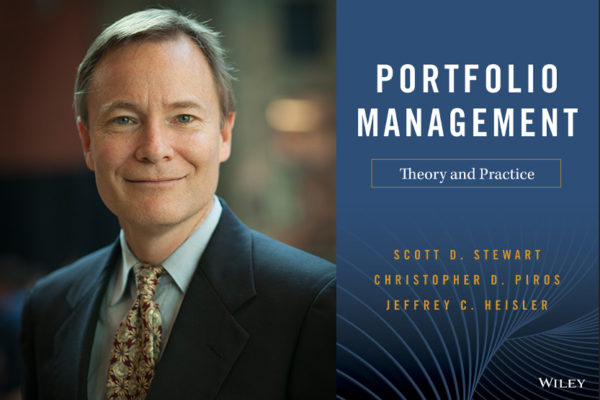Portfolio Management: a definitive guide

When Scott Stewart, MBA ’83, PhD ’85, joined State Street Asset Management in 1985 as a newly minted Johnson finance PhD, portfolio management was more art than science. The quantitative methods he had studied were little known among managers. Funds were tiny, by today’s standards, and portfolio design was an ad hoc endeavor. Within a couple of years, Stewart was managing $4 billion in assets.
“I was lucky! I got in at the right time,” says Stewart, now clinical professor of finance and accounting at Johnson and faculty co-director of the Parker Center for Investment Research. Thirty-four years later, he is the co-author of the definitive guide to the field, Portfolio Management: Theory and Practice, just out in its second edition from John Wiley & Sons.
In 1985, portfolio management was ripe for the advanced economic theory, quantitative analysis, and modeling Stewart had focused on at Johnson and was on the verge of explosive growth. He spent 16 years in the industry, first at State Street and then Fidelity, where he founded and guided the Structured Investments Group, managing a diversely allocated $45 billion in institutional assets and mutual funds. During that time, he was closely involved in the development of some of the earliest “life-cycle” funds, whose asset allocations evolve as participants move toward retirement.
When Stewart turned to teaching, he and his co-authors at Boston University’s School of Management — all experienced money managers and quantitative experts — set out to design a sequence of courses to convey everything one would learn in a 20-year career in portfolio management. Nothing in the existing literature was quite right for teaching their approach, so they developed their own materials and eventually combined it all in a book, the first edition of which came out in 2010.
While rich in quantitative methods for optimizing portfolios, allocating assets, and defining risks, Portfolio Management is also very clear about the limitations of those tools.
Portfolio Management combines theoretical rigor with the authors’ decades of experience “running money.” It is both a textbook and a practical-enough guide that co-author Chris Piros would answer technical questions from junior money managers he supervised with “It’s in the book!” It offers an interesting combination of powerful theory and an experienced understanding of investment realities. A central lesson is that diversification only works if assets remain uncorrelated when it counts. While rich in quantitative methods for optimizing portfolios, allocating assets, and defining risks, the book is also very clear about the limitations of those tools.
The authors explain, for example, how the mean-variance framework, a workhorse analytical tool that is a central component of modern portfolio theory, often yields results highly dependent on initial assumptions and with limited time horizons. They go on to demonstrate more advanced approaches to optimizing asset allocations, such as dynamic programming (which breaks down portfolio problems into multiple time periods and solves them in reverse), simulation, and portable alpha. The central text is accompanied by real-world case studies and Excel templates that readers can use to build their own portfolio management tools.
The book’s combination of rigorous theory and practitioners’ experience may be somewhat unusual for a business textbook, but not unusual for Johnson. Indeed, Stewart points to Robert Jarrow, L. Joseph Thomas, and the late Seymour Smidt, the Johnson professors who served on his doctoral committee, as important sources of inspiration and guidance.

1 Comment
Brian
Fantastic job, Professor Stewart! You continue to inspire and shape the practice of investment manager and we are lucky to learn from you. I found this resource to be very valuable!
Comments are closed.